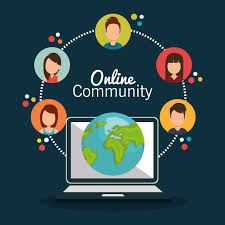
Examples of Social and Community Networks: A Deep Dive into Human Connections
In today’s fast-paced and technology-driven world, social and community networks serve as lifelines that bind individuals together. These networks are more than just digital platforms; they are webs of relationships, shared values, support systems, and cooperation. From grassroots neighborhood initiatives to vast online forums, these networks play a crucial role in shaping society, enhancing well-being, and driving change.
This article explores the diverse forms of social and community networks, offering real-world examples and human stories that illustrate their significance. We’ll look at how they function, their impact, and why nurturing them is vital for a healthier, more connected society.
What Are Social and Community Networks?
At their core, social and community networks are structures of individuals or organizations connected by one or more specific types of interdependency, such as friendship, kinship, common interests, professional ties, or shared goals.
These networks can be:
- Informal or formal
- Online or offline
- Local or global
- Short-term or lifelong
They can include close-knit circles of friends, local neighborhood watch groups, online support communities, or professional associations. Let’s explore different types through vivid examples.
1. Family and Kinship Networks
Example: Multigenerational Families in Rural India
In many parts of rural India, families live in joint households where grandparents, parents, children, and even cousins share responsibilities and support each other. These family networks act as mini-communities, ensuring emotional, financial, and logistical support.
A grandmother helping raise her grandchildren while the parents work in the fields isn’t just tradition—it’s an informal community safety net. During health emergencies, these networks often become lifesaving systems where everyone pitches in without expecting anything in return.
These kinship bonds are critical, especially in societies where state-provided services are minimal.
2. Neighborhood and Local Community Networks
Example: “Nextdoor” App in the United States
“Nextdoor” is a hyperlocal social networking service that connects neighbors. People use it to:
- Share neighborhood alerts
- Recommend local services
- Plan block parties
- Assist in emergencies
For example, during wildfires in California, neighbors have used the platform to offer spare rooms, share evacuation updates, or locate lost pets.
The digital aspect of this network does not detract from its real-world impact. It creates stronger, safer neighborhoods by encouraging people to look out for each other.
3. Religious and Faith-Based Networks
Example: Mosques and Churches Offering Community Services
In many cities, religious institutions are more than places of worship. They’re vibrant community centers. Churches, mosques, and temples often:
- Provide meals to the homeless
- Organize youth mentorship programs
- Offer counseling and support groups
For instance, the Black Church in the U.S. civil rights movement served as an organizational and emotional hub. Leaders like Dr. Martin Luther King Jr. emerged from such networks, showing how faith-based communities can spark social change.
Similarly, mosques in the UK have set up food banks that serve anyone in need, regardless of religion.
4. Online Support Communities
Example: Reddit’s “r/StopDrinking” and Mental Health Forums
The internet has birthed countless support networks. One compelling example is Reddit’s “r/StopDrinking,” where over 500,000 members share their struggles and victories related to alcohol addiction. There are no professional therapists running the show—just real people lifting each other up.
Such forums are lifelines for people in remote areas or those who fear stigma. They show how virtual communities can be just as meaningful as physical ones, sometimes even more so.
5. Workplace and Professional Networks
Example: LinkedIn and Industry-Specific Communities
LinkedIn is more than a job-hunting tool. It’s a professional social network where people build reputations, mentor newcomers, and create industry-specific groups.
Beyond digital platforms, professional associations like the American Medical Association or IEEE for engineers serve as structured communities that:
- Offer continuing education
- Set ethical standards
- Advocate for industry-related policies
These networks provide a sense of identity and purpose, while also fostering innovation and career advancement.
6. Mutual Aid Groups
Example: COVID-19 Mutual Aid Groups Worldwide
When the COVID-19 pandemic hit, formal systems struggled to cope. That’s when mutual aid groups exploded across cities and villages alike. These were spontaneous, often leaderless groups formed to:
- Deliver groceries to the elderly
- Provide mental health check-ins
- Raise money for rent assistance
In London, the COVID-19 Mutual Aid UK network involved over 4,000 local groups. It was people helping people, without bureaucracy. The trust and solidarity built during those times have continued in many communities even after the pandemic eased.
7. Activist and Advocacy Networks
Example: Black Lives Matter (BLM)
BLM started as a hashtag but grew into a global movement and network advocating against racial injustice. What makes BLM powerful is its decentralized structure—local chapters operate independently while aligning with the broader mission.
This network thrives on:
- Social media for coordination
- In-person protests
- Policy lobbying
- Storytelling and cultural expression
BLM is a clear demonstration of how social networks, when driven by shared purpose, can spark worldwide discourse and change.
8. Cultural and Creative Communities
Example: Makerspaces and Artist Collectives
In cities like Berlin or San Francisco, makerspaces (shared spaces with tools for making art, electronics, woodwork, etc.) are fostering innovation and creativity.
Groups like “TechShop” or “Hackerspace” bring together artists, engineers, and hobbyists. These aren’t just hobby clubs; they are social networks where knowledge, resources, and inspiration are exchanged.
Similarly, artist collectives like Wu-Tang Clan in music or AfriCOBRA in visual arts are more than collaborators—they’re communities with shared identity and vision.
9. Educational Networks
Example: Alumni Associations and Student Circles
From Ivy League alumni networks to WhatsApp study groups in rural African schools, educational networks can be deeply impactful.
Harvard’s alumni network, for instance, is famously influential, helping members access career opportunities, political connections, and funding.
At the grassroots level, former students forming tutoring circles in Kenyan villages offer a different but equally powerful example of peer-driven educational support.
10. Environmental and Sustainability Communities
Example: Transition Towns and Urban Gardening Groups
The Transition Network, started in the UK, supports communities in shifting toward sustainability. Local groups engage in:
- Community gardening
- Renewable energy projects
- Repair cafés
In Detroit, community members turned abandoned lots into urban farms, not only improving food access but also bringing people together across generations and backgrounds.
These networks build resilience—both environmental and social.
Why Social and Community Networks Matter
1. Mental Health and Belonging
Studies show that people with strong social networks are less likely to suffer from depression and anxiety. Simply knowing someone has your back can make life’s struggles more bearable.
2. Economic Opportunity
Community networks often connect people to job leads, mentorship, and business opportunities. Micro-lending in Bangladesh, for instance, often succeeds because of tight community accountability structures.
3. Crisis Response and Resilience
Whether it’s natural disasters, pandemics, or conflict, communities that are connected bounce back faster. Informal communication channels and trust networks become crucial when formal systems break down.
Challenges Facing Social Networks Today
While networks can empower, they can also exclude. Echo chambers, misinformation, and discrimination can thrive in poorly moderated spaces.
Moreover, digital networks often lack the intimacy and trust found in face-to-face connections. That’s why hybrid models—combining online tools with offline interaction—are increasingly essential.
How to Strengthen Social and Community Networks
- Encourage participation: Attend local meetings, volunteer, or simply say hello to neighbors.
- Support inclusion: Make efforts to include marginalized voices.
- Foster trust: Be reliable, honest, and open to dialogue.
- Use technology wisely: Leverage digital platforms for real-world impact, not just noise.
Conclusion: The Ties That Sustain Us
From tight-knit family groups to vast digital movements, social and community networks shape our lives in more ways than we often realize. They help us survive, grow, and transform.
In an era where individualism and isolation often dominate the headlines, re-investing in our social fabric may be the most radical, yet deeply human thing we can do.
So whether it’s checking in on an elderly neighbor, joining a local arts collective, or participating in a climate action group, remember: every connection counts.
The health of our societies depends on the strength of our communities.






